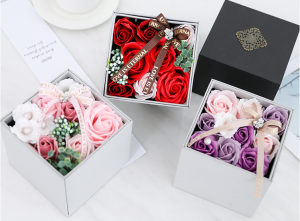Creating lifelike artificial flower arrangements that capture the essence of realism involves attention to detail, a deep understanding of botanical elements, and skilled craftsmanship. Here’s a guide to mastering the art of realism with lifelike artificial flowers:
- Choose High-Quality Materials: Opt for artificial flowers made from premium materials like silk, latex, or high-quality synthetic fabrics. These materials closely mimic the texture and appearance of real flowers.
- Study Real Flowers: Observe real flowers in various stages of growth. Notice the details in petal texture, color variations, leaf shapes, and how they interact with light.
- Focus on Botanical Accuracy: Pay attention to the accurate portrayal of each flower’s unique features. Emulate the veins on leaves, the delicate folds of petals, and the way flowers naturally curve and bend.
- Select Realistic Colors: Choose artificial flowers that replicate the natural hues of real blooms. Look for variations within a single color, as real flowers often display subtle tonal shifts.
- Incorporate Natural Elements: Combine artificial flowers with real leaves, twigs, or branches to add an extra layer of realism and depth to your arrangements.
- Craft Realistic Arrangements: Emulate the way real flowers grow in nature. Mimic the angles at which flowers naturally bend and arch, and incorporate varying heights and sizes to create a harmonious composition.
- Use Reference Images: Have reference images of real flowers on hand as you work. These images can guide you in capturing the unique characteristics of each flower.
- Layer and Depth: Build layers within your arrangement by placing smaller flowers and leaves in the background and larger blooms in the foreground. This adds depth and dimension to the composition.
- Natural-Looking Stems: Pay attention to the stems of your artificial flowers. Mimic the curve and flexibility of real stems to achieve a natural and lifelike appearance.
- Incorporate Buds and Blooms: Mix buds and partially opened flowers with fully bloomed ones to replicate the stages of growth present in nature.
- Details Matter: Focus on the small details, like dewdrops, pollen, or slightly curled petals, to infuse your arrangement with an authentic touch.
- Experiment with Texture: Consider using materials that mimic the textures found on real flowers, such as velvety petals or waxy leaves.
- Play with Lighting: Arrange your artificial flowers in a way that takes advantage of natural or artificial lighting. Light can enhance the realism and highlight the intricate details.
- Avoid Symmetry: In nature, perfect symmetry is rare. Embrace asymmetry and imperfections to make your arrangement feel more genuine.
- Practice and Patience: Achieving lifelike realism takes practice. Be patient and open to learning from each arrangement you create.
Remember that mastering the art of realism with lifelike artificial flowers requires continuous observation, practice, and a genuine passion for replicating the beauty of nature.
























